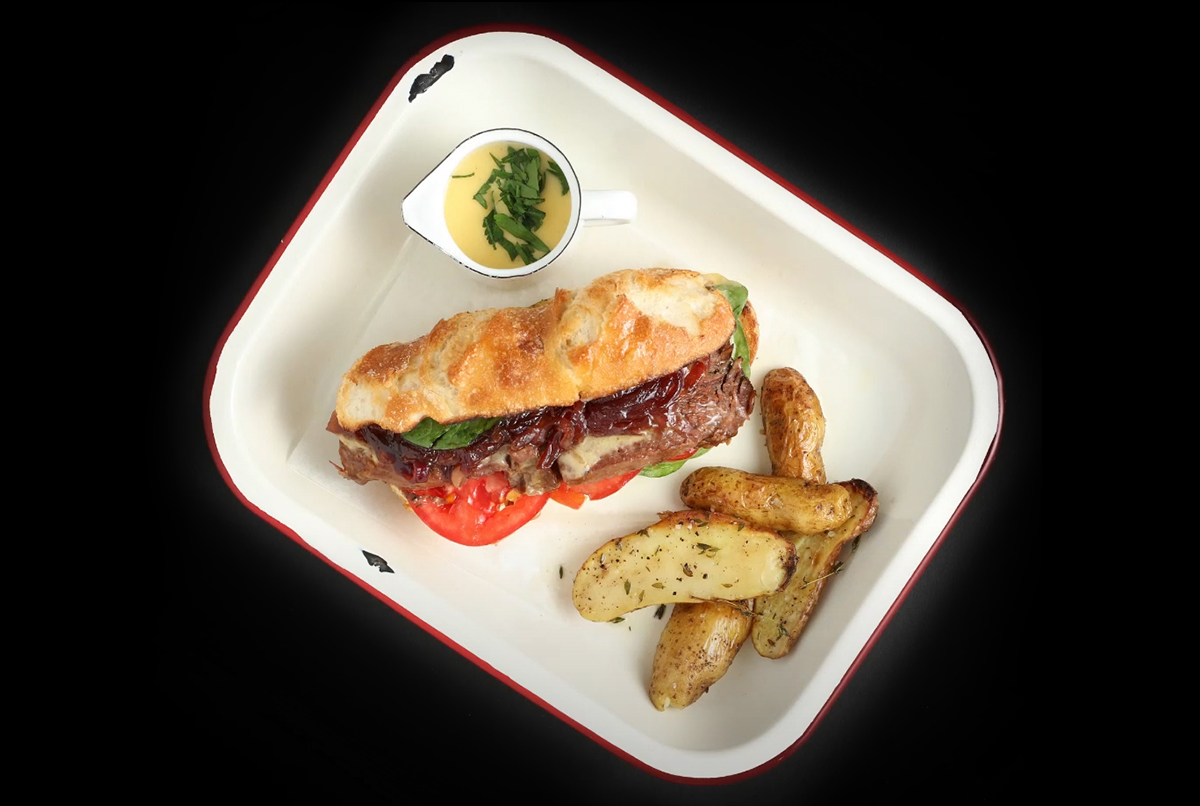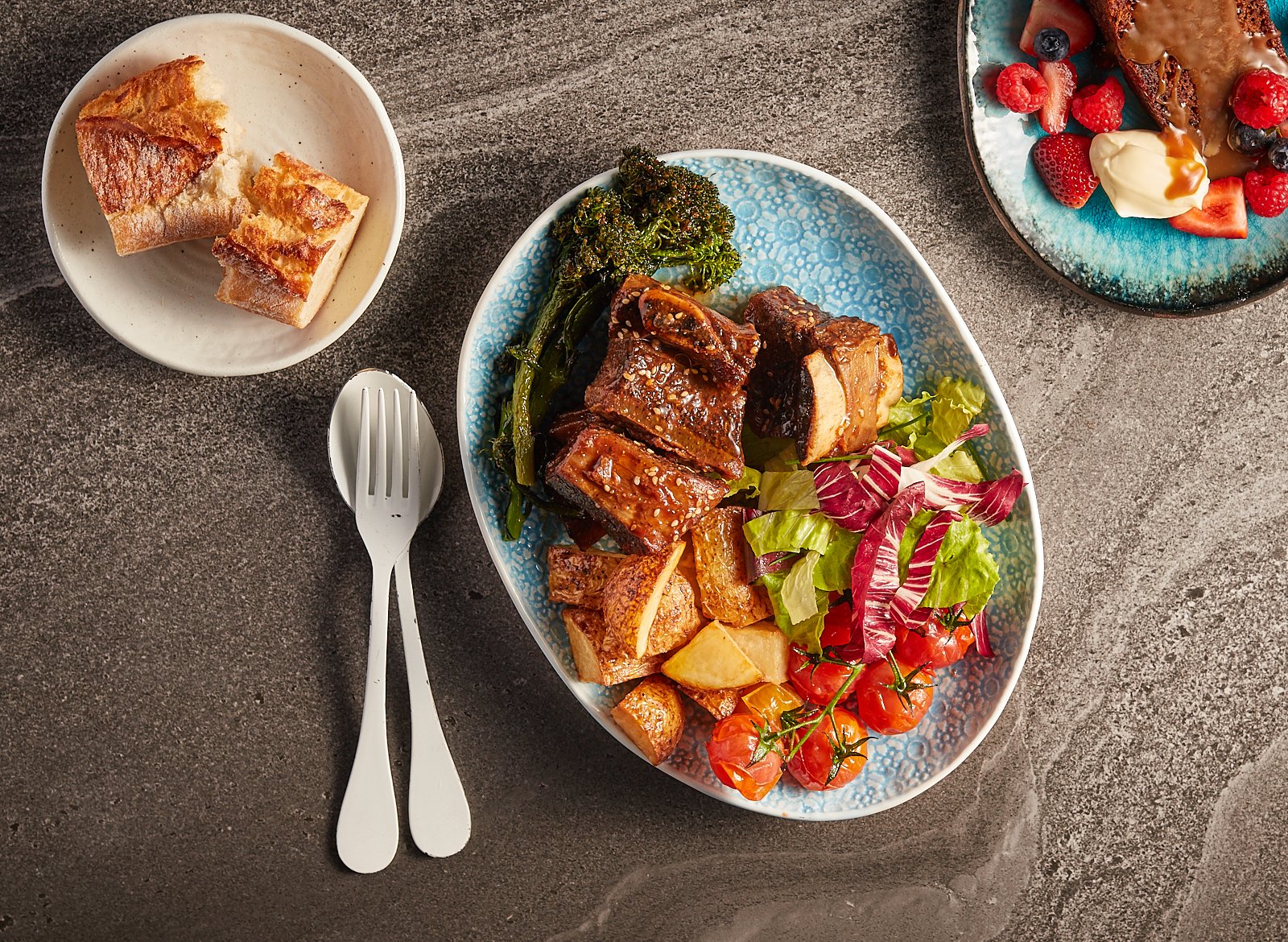In Europe, mature-aged beef has long been tradition, particularly in the North of Spain where cattle live a full life up to 18 years before being processed as beef. Revered for its rich depth of flavour, increased marbling and yellow hued fat – Galician beef has found favour on the grills of restaurants like Asador Etxebarri in Spain’s Basque region and piqued the interest of chefs around the world.
From a production sense, mature-aged beef doesn’t make much sense – specifically growing out animals to a mature-age to achieve enhanced flavour would be an extremely high cost, low return process. But, when positioned as a value-adding opportunity for producers for their older cows no longer fit for breeding, an opportunity begins to emerge.
In Australia, beef and dairy account for two of the three largest rural industries with approximately 21 million beef and 2.4 million dairy cattle in our national herd*. Of these herds, approximately 13 million are breeding cows – producing calves on an annual basis to replenish the herd or to be grown out as beef. Most cows have a breeding lifespan between 5 – 12 years – so what happens when a cow passes her calf-bearing years?
Traditionally, a cull-cow is destined as manufacturing beef – comprising of mince and other processed products. However, here in Australia, opportunistic beef and dairy producers are identifying a new premium market for their older cows – and in doing so, providing chefs with a unique beef product.
Mark Best spoke to a range of producers playing in this space – growing out mature-aged beef from retired dairy cows like Jerseys and beef specific breeds like Wagyu and Angus – to dual-purpose beef and dairy breeds like Fleckvieh.
With its rich, developed beefy flavour, mature-aged beef suits those looking for a unique eating experience. For me, the selection of product we sampled is some of the best beef I have ever eaten. In addition to its unique eating, repurposing retired breeding animals has an ethical element to it – elevating the end use of an animal that has provided throughout its lifespan.
Luke and Jess Micallef both graduated with Agricultural Science honours from Sydney University before pursuing careers in the dairy industry and setting up Camden Valley Farm, 60km west of the Sydney CBD, in 2011.
Here they run a small herd of Jersey cattle, the smallest of the dairy breeds. However, they are not producing milk for human consumption, focusing instead on producing milk fed veal and a retired dairy cow beef product.
"Over the years the herd grew but with only a small herd supplying a milk company was not viable. We began rearing our own dairy bull calves and purchasing additional bull calves from local dairy farms to raise as veal and marketing them into Sydney butcheries,” Jess said.
Their Jersey cows usually retire between 8-14 years depending on the production capabilities and traits of the individual cows. With the help of Vic’s Meats head butcher, Darren O’Rourke, they identified an opportunity to value-add to the retired cows and together with Darren developed their ‘retired’ dairy cow line of beef.
The first time Darren experienced aged beef was in the UK about seven or eight years ago.
“I actually knew Luke and Jess through selling their pasture and milk fed Camden Valley Veal. After the success of their veal and the relationship I had developed with them – I finally had someone that I could talk to about this concept of aged beef and the program started from there,” Darren said.
The first cow they trialed was 10-12 years old and had just finished milking – neither Luke nor Darren understood the importance of the pasture conditioning process at the time and Darren recalls the first mouthful reflecting the general perception of old cow – tough.
“I dry-aged this cow for three weeks and it was really good – the texture wasn’t there yet and the first mouthful was quite tough but it was so deep flavoured and I was convinced we were onto something. After that first trial, we did more research and developed the product together. We started pasture conditioning for 12 months and between that and the dry ageing process, we came up with Camden Valley Dairy Beef,” Darren said.
“With a retired dairy cow, it’s all about the beefy flavour developed after 8-10 years eating grass. The beta-carotene consumed in her lifetime on pasture also produces a yellow fat and one thing we have noticed with the Jersey cows is that they are predisposed to producing a yellower fat – an iconic trait when it’s sitting on the shelf,” Luke said.
Generally, dairy cattle are a lot leaner than beef cattle and have a different composition meaning the shape and size of their muscles vary – posing some challenges at the processing end.
Beef cattle have been bred over many years to produce a consistent size and quality product and marbling. This hasn’t been the focus in the dairy industry so there can be a fair bit of variability in the product itself. With things like marbling, we really don’t know what we are going to get until we have processed the animal – it’s primarily a genetic trait and it’s not something that has been studied in the dairy industry yet,” Luke said.
HW Greenham & Sons is an Australian family owned meat processor procuring livestock from some of the best beef-producing regions in Australia and behind renowned brands such as Cape Grim, Bass Strait and Robbins Island Wagyu. In 2018, they launched their take on Spanish Galician beef – aptly named Vintage Beef Co.
The beef industry already has in place a stringent eating quality grading system – Meat Standards Australia (MSA). The model is the world’s leading eating quality grading system and was the catalyst for Greenham’s move into mature-aged beef when they noticed that many of their older cows were receiving high eating quality scores.
“The meat from older cows would have traditionally gone to commodity beef markets like Korea, Taiwan and Japan and some would also be used for manufacturing meat. We saw there was the potential to offer a unique beef product from older cows with high eating quality and label them under a brand,” said Group Marketing & Communications Manager, Jelena Radisic.
Vintage Beef Co comes from British breed beef cows aged on average 5-9 years or from Wagyu beef cows ranging between 9-15 years old. It is graded into three categories based on marbling scores – Reserva MB 1-2, Galiciana MB 3+ and The Matriarch – sourced from the breeding stock of some of the finest Wagyu in Australia.
Vintage Beef Co’s farmers turn retired breeding cattle out to pasture where they feed only on grass. The cows further mature in the paddock and are not processed until they are at least five years of age – more than twice the age of regular beef cattle.
Traditionally older meat has been viewed as lower quality. The MSA grading system allowed us to identify older cows that grade well under the MSA model and market it as the high eating quality product that it is. Because the cows are older, the meat has a rich, developed grass fed flavour alongside superb marbling,” Jelena Radisic said.
Husband and wife team Josh Butt and Jyoti Blencowe manage 150 acres of land in South Gippsland where they run a herd of around 60 primarily dual-purpose heritage breed cows. The wanted to pursue a beef operation that was interesting and unique as well as one that felt ethical and environmentally conscious.
“We had read about Txuleta beef from Spain and the amazing feedback it received. We also understood that some European dairy cattle were starting to be retired for beef to meet demand for mature meat in the UK. Given we are located in a dairy region of Victoria, retiring dairy cows seemed like an appropriate choice,” Josh said.
“Our main breed is Fleckvieh, a dual-purpose breed originating in Central Europe and used for both beef and milk. Dual-purpose cattle have a similar frame to beef cattle. Our Txuleta 1882 cattle are a lot heavier with a live weight around 800-900kg however the yield is probably slightly lower than a beef animal with more genetic and size variability,” Josh said.
We buy our cows directly from local dairy farmers when they are at the end of their milking life. We seek cows that are dual purpose or rarer breed that have good characteristics for mature beef. This often involves visiting the dairy farms, hand selecting appropriate cows and getting a sense of the farming operation that they come from. They retire on our farm for at least one year to gain optimum condition before being sold for beef.”
“Financially, the results have been variable with the current high price of cattle making finances more difficult. We have taken risks in embarking on this business model, although the uniqueness of this beef and the holistic social, environmental and ethical benefits currently outweigh the financial vulnerability,” Josh said.
Nick Venter immigrated to Australia from Johannesburg in 2015 with a firm resolve to retire after a successful career in corporate finance and venture capital – however his general enthusiasm for new ideas and a formidable entrepreneurial spirit meant he was soon looking for opportunity.
In 2016 I purchased a hobby farm with a view to bring highest quality meat to the Australian market, at a reasonable price. After reading an article on the consumption of older animals in Spain, an idea started to form and that idea became Copper Tree Farms,” Nick said.
In 2017, Venter approached Quentin Moxey of Australian Fresh Milk Holdings, a large Australian dairy producer. AFMH milks 13,000 Holstein Friesian cows across multiple sites, producing around 200 million litres annually.
“I approached AFMH and offered them a premium price for their retired dairy cows and we struck an offtake agreement for the 5-8 year old cows and Copper Tree was born. The cows are in such good condition that we didn’t feel there was any need for pasture conditioning. Once we had refined our dry ageing process, I knew we were onto something,” Nick said.
Venter approached some of Sydney’s leading chefs Lennox Hastie, Neil Perry and Sam Cain with the product and their initial response was very positive. The product is now on the menu of many top restaurants around Australia.
The quality of the product these forward thinking operators are producing is exceptional – however, there are still challenges in the marketing of mature-aged animals as beef. One is the perception that the meat from older animals is tough and the concept that flavour may be more important than tenderness is still a challenge. Another is the variability of the product – particularly in the dairy breeds where eating quality has not been a focus for the industry and there is such variation in size and structure of the animals.
“Sure, there is a chew factor but that is where the dry ageing comes in and is effective in tenderising some of those muscles – so it’s not as tough as some might perceive it to be. It’s about encouraging people to try it, to have it be prepared properly and to realise what value that product can have,” Luke concluded.
"Txuleta rib eye 9 weeks dry aged at Emilio's Specialty Butcher"


